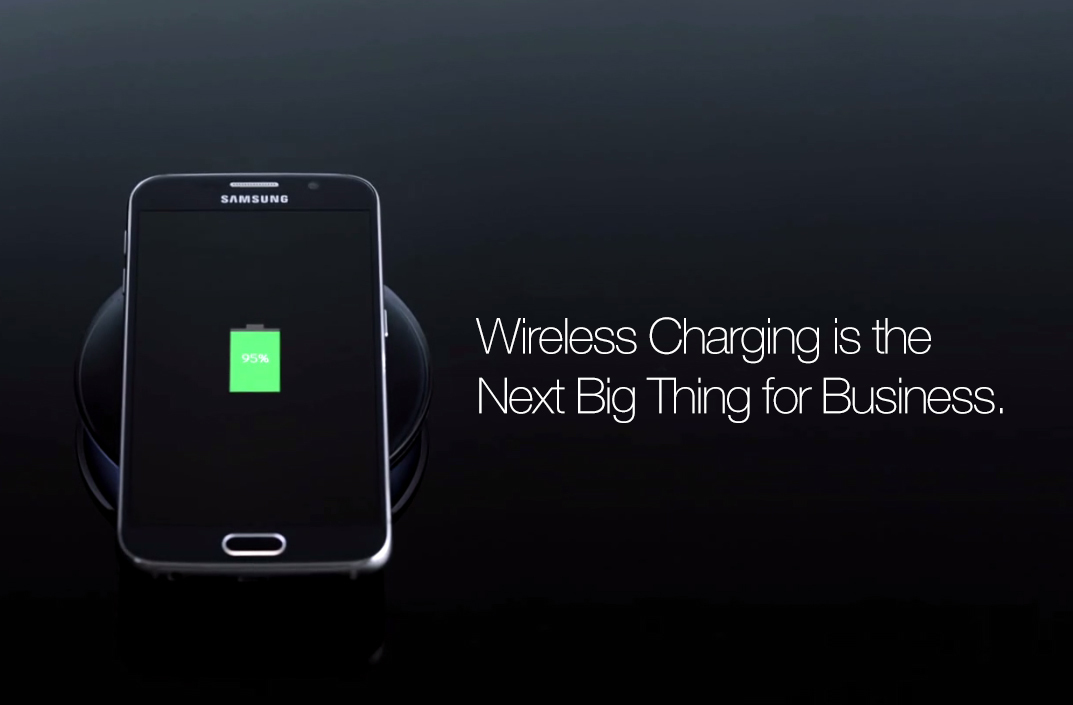Mobile users may no longer have to worry about carrying around a charger, finding a place to plug it in, or waiting to leave the office until their device is at a full charge. Wireless charging is catching on, and more surfaces every day will be able to charge mobile devices simply by making physical contact.
Wireless chargers for small devices, such as tablets and smartphones, work on the principle of electromagnetic induction: Wire coils within a charging plate create a magnetic field as an electric current passes through it. To charge a device, a user needs only to place it on the charging plate, which itself is plugged into a socket.
This technology offers peace of mind for company employees who rely on mobile devices to perform their job functions. Though mobile devices have become the technology of choice for business purposes, their batteries can drain at inopportune moments. With wireless charging, charging plates will be ready and available for the users, wherever they decide to set down their devices.
The Market is Poised for Takeoff
Wireless charging technology was introduced to retailers within recent years, but early products were considered to be limited in terms of performance. They required a separate accessory to plug into the device and often took too long to provide a charge. As wireless charging technology advanced, it became faster and more effective – and the market is starting to take notice. According to a 2015 report by IHS, the wireless charging market is projected grow to more than $1.7 billion in 2015, and it will continue to grow by approximately $15 billion every year through 2024.
Universal Charging is a Necessity
As the demand for wireless charging continues to rise, device manufacturers must adopt a universal standard for wireless chargers. David Green, research manager for power supplies and wireless power at IHS Technology, notes, “End users do not care which technology or standard their device uses, they just want it to work well.” At present, there are two standards used throughout the world: those created by the Wireless Power Consortium (WPC) and those created by the Power Matters Alliance (PMA). Most wireless-charging devices on the market are only compatible with one standard, meaning that a device that charges on the WPC standard will not charge on a surface using the PMA standard and vice versa. In order to provide a truly universal experience for consumers, today’s devices with wireless charging capabilities must support both standards.
Big Businesses Are Getting on Board
Device manufacturers are beginning to build wireless charging capabilities directly into their products, removing the need for users to purchase separate accessories for their devices. The Samsung Galaxy S®6 is the first device to come with a built-in coil receiver for wireless charging. In addition, the Galaxy S6 supports charging across both WPC and PMA wireless chargers, providing a seamless, reliable charging experience.
Forward-thinking companies have begun to offer more publicly available charging plates. One example is Starbucks, which announced in November 2014 that it is rolling out the provision of wireless charging plates in its outlets throughout the US. McDonald’s has also announced that it is equipping 600 of its stores throughout the United Kingdom with charging plates, and Marriott is doing the same in its hotels.
Samsung and IKEA have collaborated to build charging capabilities into the Swedish furniture company’s products. This kind of ingenuity may mean a less cluttered, more productive workspace for employees. A mobile user can go from his or her desk to the boardroom for a meeting, to the coffee shop, and back home – working the entire time yet never losing a charge.
Wireless charging provide benefits for all, business users and consumers alike, and will ensure that individuals never again have to suffer the inconvenience of a dead battery.
To learn more about the Galaxy S6 and Galaxy S6 for business, visit https://smbz.us/1HWze21








